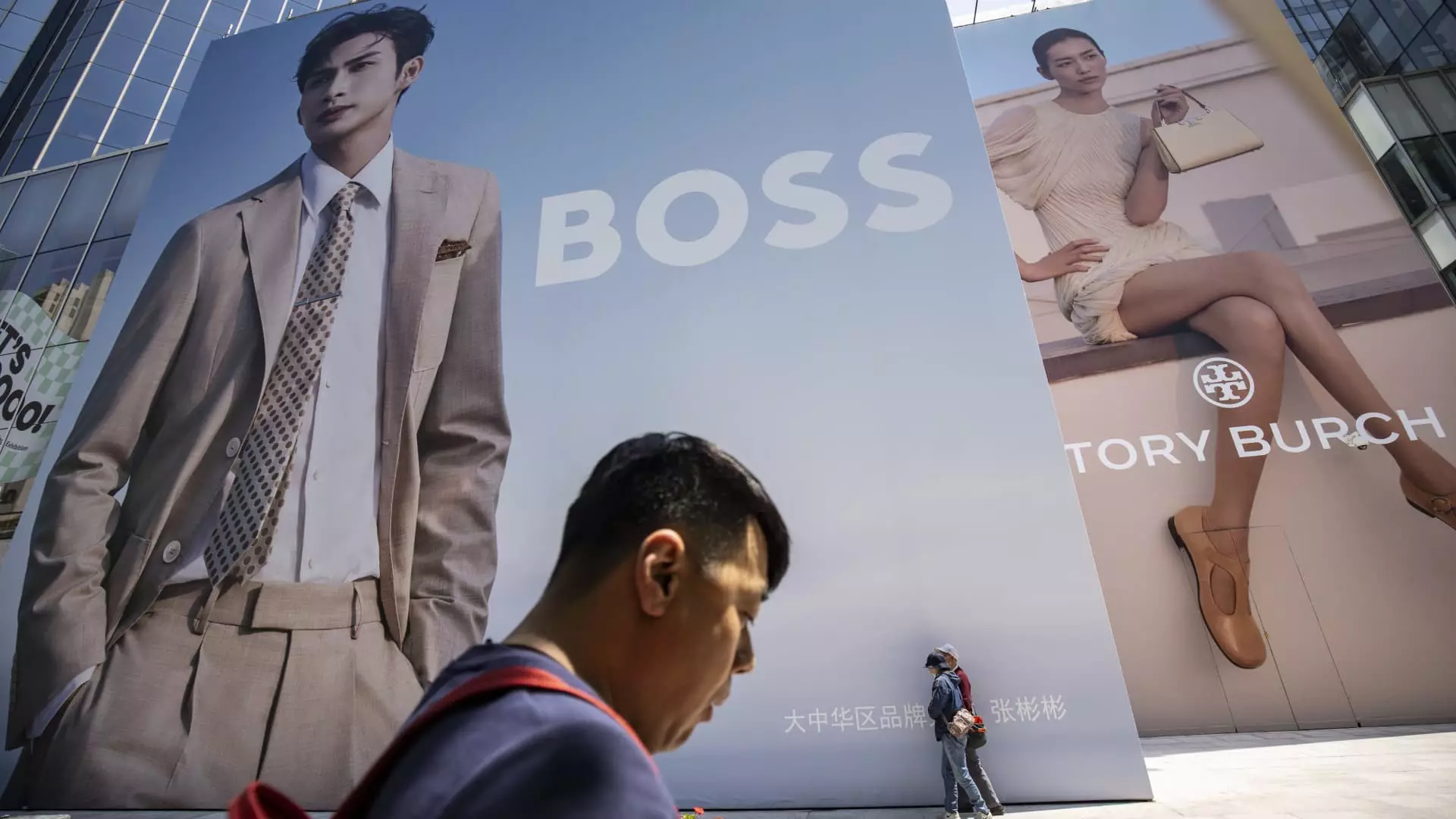In recent weeks, the luxury sector in Europe has faced significant challenges, with emerging indicators pointing towards a decline in consumer demand, particularly among affluent Chinese buyers. This pattern is becoming increasingly evident, as industry analysts express concerns over an increasingly bearish outlook. As a case in point, the Stoxx 600 index reflected this trend on Monday, showing a notable drop in share prices for major luxury brands. Notably, Germany’s Hugo Boss emerged as one of the hardest-hit firms, with a staggering 4% decrease in its stock price following a downgrade by analysts at Bank of America Securities from ‘buy’ to ‘underperform.’ This shift illustrates growing uncertainty and reflects the broader market sentiment regarding luxury goods.
In their analysis, Bank of America Securities pointed out that the post-pandemic peak in consumption observed in 2022 is not sustaining momentum. They noted a significant sequential slowdown in revenues across the luxury sector, attributing this to a broader normalization of consumer spending patterns that began with American consumers and extended to Korean, European, and Japanese markets. However, analysts believe that the most pressing issue remains the diminishing demand from the Chinese consumer—the last bastion of support for the luxury sector. As sentiments fluctuate in this vital market, a forecasted 1% revenue decline in 2024 seems not just plausible but likely.
The performance of various luxury firms underscores the vulnerability of the sector as a whole. Burberry, for instance, saw its stock drop nearly 3% on Monday after Bank of America analysts slashed its target price. Similarly, iconic French luxury giants like LVMH and Kering also faced downgrades, reflecting the analysts’ broader assessment that the luxury market is retreating amidst geopolitical turmoil and economic unpredictability. With LVMH stocks hitting their lowest levels since July 2022, there seems to be a consensus that the current consumer environment is far from favorable.
The sentiment around the luxury industry’s future is echoed by experts such as Jon Cox, the head of European consumer equities at Kepler Cheuvreux. He pointed out that while China has transitioned from a small player to a substantial force in the luxury space over the past decade, current economic adversities, especially in the property sector, are undermining this growth trajectory. Compounded by uncertainties in Europe and the upcoming U.S. elections, the luxury market faces a potentially grueling period of stagnation.
Moreover, the luxury market’s demographic landscape complicates matters further. Brands that target younger, fashion-conscious consumers may find their strategies increasingly precarious as spending priorities shift. The aspirational buyers who once fueled demand for luxury products are now displaying more fickle spending patterns, making brands like Burberry’s revitalization efforts much more challenging. For brands that have recently undergone restructuring, the struggle is not just about current sales figures; it’s also about the long-term positioning that necessitates patience from investors—something that is in short supply in today’s volatile market.
Investors are drawn to brands like Hermès, which continue to be well-positioned, highlighting the divide in investor sentiment. The consumer appetite for luxury remains but is becoming increasingly discerning and focused on brands that establish a strong narrative and connection with their customer base. This shift necessitates that brands not only innovate but also foster loyalty through meaningful engagement.
Tariffs and Market Dynamics
An additional layer of complexity is added by the geopolitical climate, particularly regarding potential tariffs. Susannah Streeter from Hargreaves Lansdown raised concerns about escalating trade tensions. The risk of China imposing new tariffs on luxury brands symbolizes a significant threat, given these goods are often perceived as non-essential compared to heavier industrial components. For luxury purveyors, this points to an unpredictable economic landscape where strategic foresight is essential to mitigating risks.
As the luxury market navigates a landscape increasingly characterized by uncertainty and changing consumer behavior, stakeholders must remain vigilant. Understanding the shifting tides in consumer demand, the potential impact of international trade policies, and the demographic intricacies become paramount for brands aiming to sustain growth amidst adversity. The next few semesters could indeed be transformative, pushing brands to innovate, adapt, and engage like never before in their pursuit of capturing the luxury buyer’s attention.

Leave a Reply